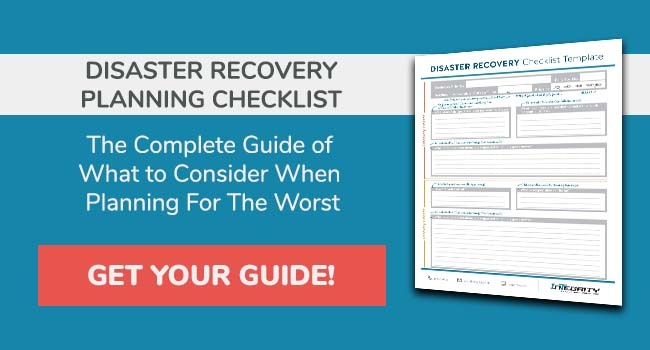Use This Disaster Recovery Plan Template to Protect Your Business

If the worst were to happen, is your business prepared to bounce back? It's a question that has to be asked and answered. If the answer is "no," download the Disaster Recovery Plan template at the bottom of the post. That will get you and your business started on developing a Disaster Recovery Plan you can count on. Now, more than ever, companies rely on digital data storage. Servers have replaced filing cabinets. From private customer information to sensitive financial records, businesses are relying heavily on their chosen digital storage methods to keep their data secure.
SEE ALSO: Let's talk about your tech security today
For the most part, digital storage (like a hybrid cloud solution, for example) is safe. It makes data easier to access for those who should be accessing it, provides a wide variety (onsite and offsite servers, the cloud) of backup options, and can be secured with the right measures. But, there's no solution that is 100% safe and secure. Even if you're supremely confident in your current data storage method, it's important to plan for the unthinkable. What could a data disaster look like? Below are a few scenarios that would qualify:
Cyber Crime
The most talked about data disaster is cyber crime. No matter how secure your data is, there is still a chance that criminals will try to steal it. If a cyber attack somehow succeeds, you'll need a Disaster Recovery Plan in place to ensure that any stolen data can be restored and that data remains as protected as possible. In the event of a Ransomware attack (where a criminal locks a computer, holding the data "ransom"), for example, you want to know that your data has been backed up elsewhere and that it can be restored without paying a ransom. Your DR Plan will help instruct your team on how to respond to the crime and what the next steps are.
Natural Disasters
No one thinks that a natural disaster will happen until it does. It's nearly impossible to predict when an earthquake, tornado, fire, flood, or other disaster will strike. Because of that unpredictability, you need a Disaster Recovery Plan that details how your team should respond and how you can preserve as much data as possible. Storing data in the cloud or in multiple backup locations is one strategy. Using the template at the bottom of the post, you'll be able to start evaluating your best options for keeping data safe from peril, in the event of an act of nature.
Equipment Failure
Sometimes, equipment fails. Think about a car: even if it's serviced regularly and taken care of, it can still die without warning. That's why it's important to have a Disaster Recovery Plan. If your server dies or your network crashes inexplicably, you'll need a plan for restoring things as quickly and painlessly as possible. Disaster Recovery is all about the unexpected. If the unexpected occurs, it's important to get your systems back up and running. Any extended downtime can cost your business money. Your DR Plan will also account for important data, making sure that it's preserved and can be restored when your business has recovered.

